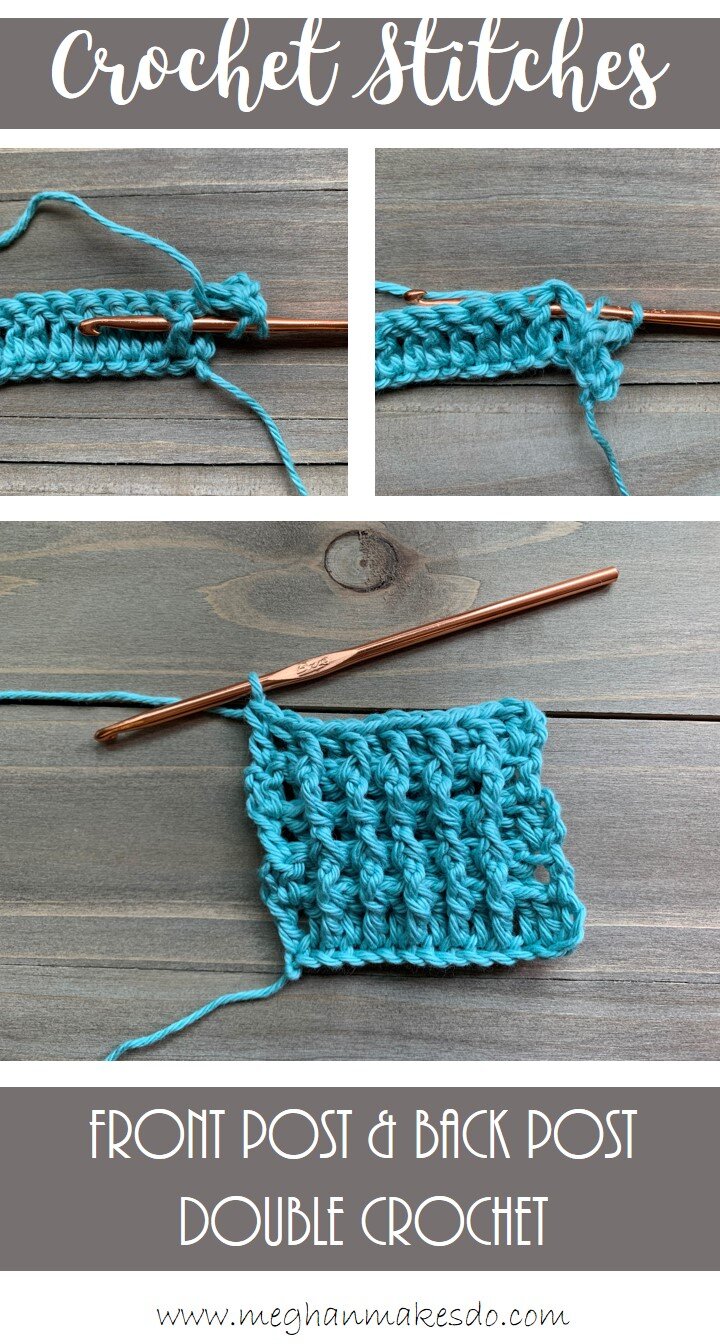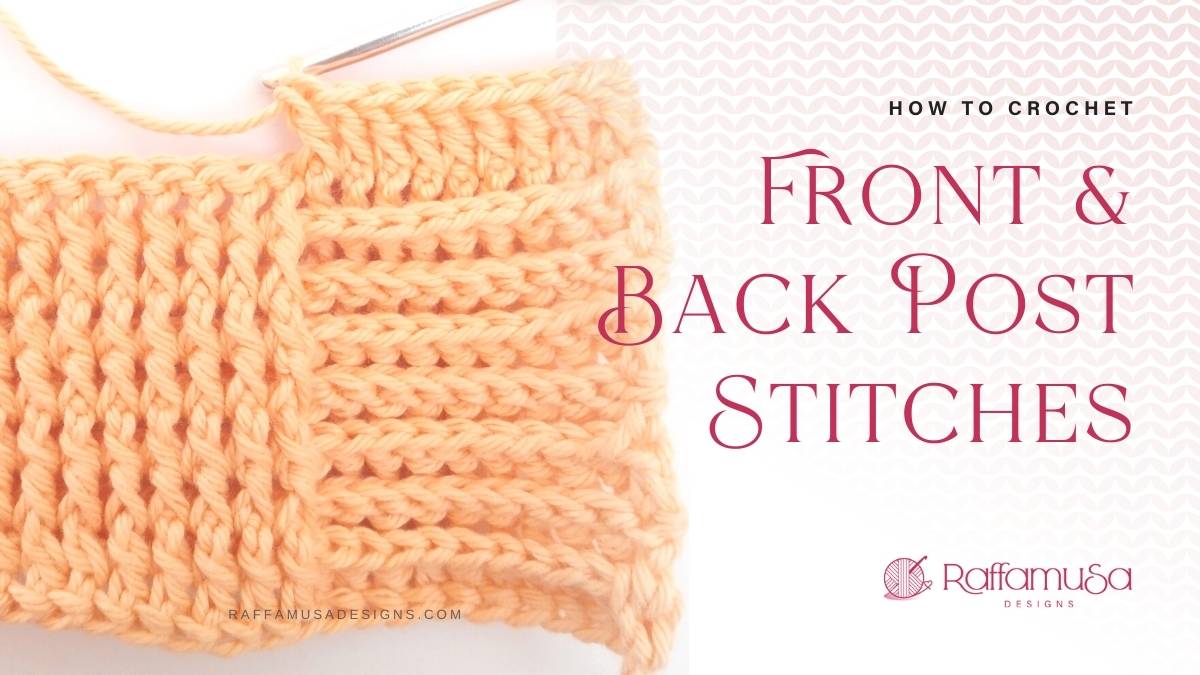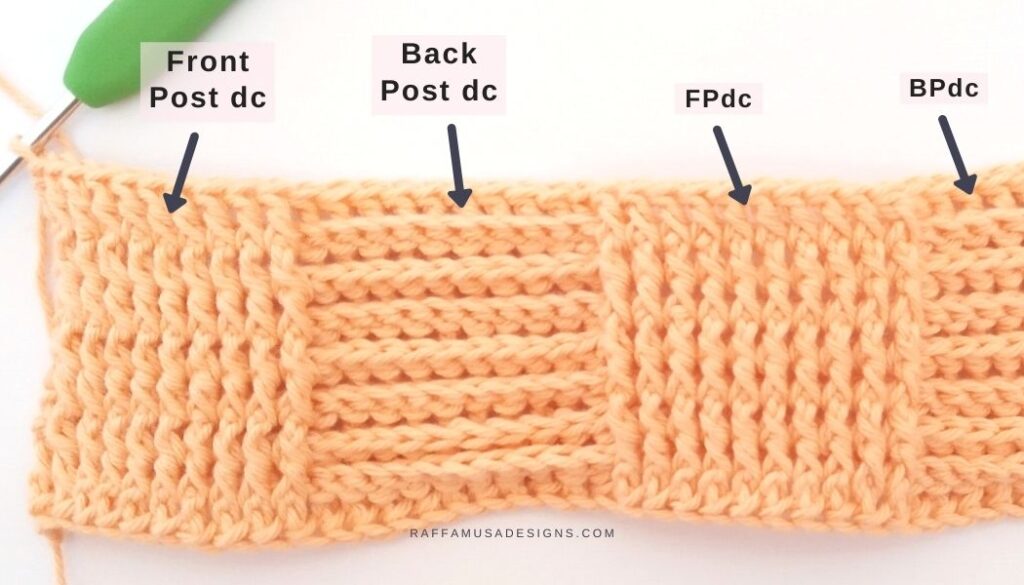Let me teach you how with this video tutorial. It is perfect for blankets, baby items, hats, and much more. Web front post and back post crochet is perfect for edging, ribbing, and even cabling in crochet! Web crochet post stitches create lovely textured fabric. You’ll see these used in crochet cables or a ribbed edging around the bottom of a hat or edge of a blanket and more.
They are worked around the post of the. Web learn how to the crochet front and back post stitch with this easy beginner friendly video and photo tutorial using double crochets. Instead of making your stitch through the loops at the top of the stitch, you make it around the stitch. Check out our written and video tutorial to learn how! The front and back post double crochet stitches!
While the dc is by far the most common stitch used in post stitches, it's not the only one that you can use. Web front and back post crochet stitches are used to create texture in crochet. Instead of making your stitch through the loops at the top of the stitch, you make it around the stitch. Web learn all about the front and back post stitch in crochet with this free and simple crochet tutorial pattern. Web how to crochet front post/back post stitches.
Normally, you insert your hook in the top loops of the stitch. Web front & back post single crochet (fpsc & bpsc) stitches are useful as textural elements, or to change the direction of your work. Web crochet post stitches create lovely textured fabric. For post stitches, you insert your hook around the post of the stitch. Web front post and back post crochet is perfect for edging, ribbing, and even cabling in crochet! Just to recap, post stitches are used to create a variety of patterns and textures in crochet, like cables, ribbing, or more decorative raised patterns like the basket weave stitch. See how in this tutorial! The front and back post double crochet stitches! Pull up a loop, then finish the rest of the stitch as you would a regular stitch. This makes the back of the work have a ridge that sticks up and the front have a valley that goes down. Check out our written and video tutorial to learn how! Web crochet tutoiral on how to do the front post/back post crochet stitches. Web you just need to learn where to put it. Easy written, image and video learning. Web front post double crochet (fpdc) you will start with a row of dc.
Web Learn All About The Front And Back Post Stitch In Crochet With This Free And Simple Crochet Tutorial Pattern.
Web front post and back post crochet is perfect for edging, ribbing, and even cabling in crochet! Just to recap, post stitches are used to create a variety of patterns and textures in crochet, like cables, ribbing, or more decorative raised patterns like the basket weave stitch. They are worked around the post of the. Great for ribbings, edgings, or even as a stand alone stitch, front post and back post crochet stitches are squishy, super textured,.
Web Crochet Post Stitches Create Lovely Textured Fabric.
While the dc is by far the most common stitch used in post stitches, it's not the only one that you can use. Web how to crochet front post/back post stitches. I'll help you identify the post of the stitches, and. Web crochet tutoiral on how to do the front post/back post crochet stitches.
Web Front Post Double Crochet (Fpdc) You Will Start With A Row Of Dc.
Web the front post and back post crochet stitch is used to ribbing, basket weaves and cabling. Web in today's video i teach you how to crochet the front post and back post double crochet stitches. Web front & back post single crochet (fpsc & bpsc) stitches are useful as textural elements, or to change the direction of your work. It is perfect for blankets, baby items, hats, and much more.
Web Here Are A Few Crochet Stitch Patterns Where You’ll Be Able To Practice Front Post And Back Post Stitches:
Web front and back post crochet stitches are used to create texture in crochet. The front and back post double crochet stitches! In fact, you have two options: Web a back post crochet stitch is made by inserting the hook from the back of the work to the front, going around the post of the stitch from the previous row, and then finishing the stitch.









